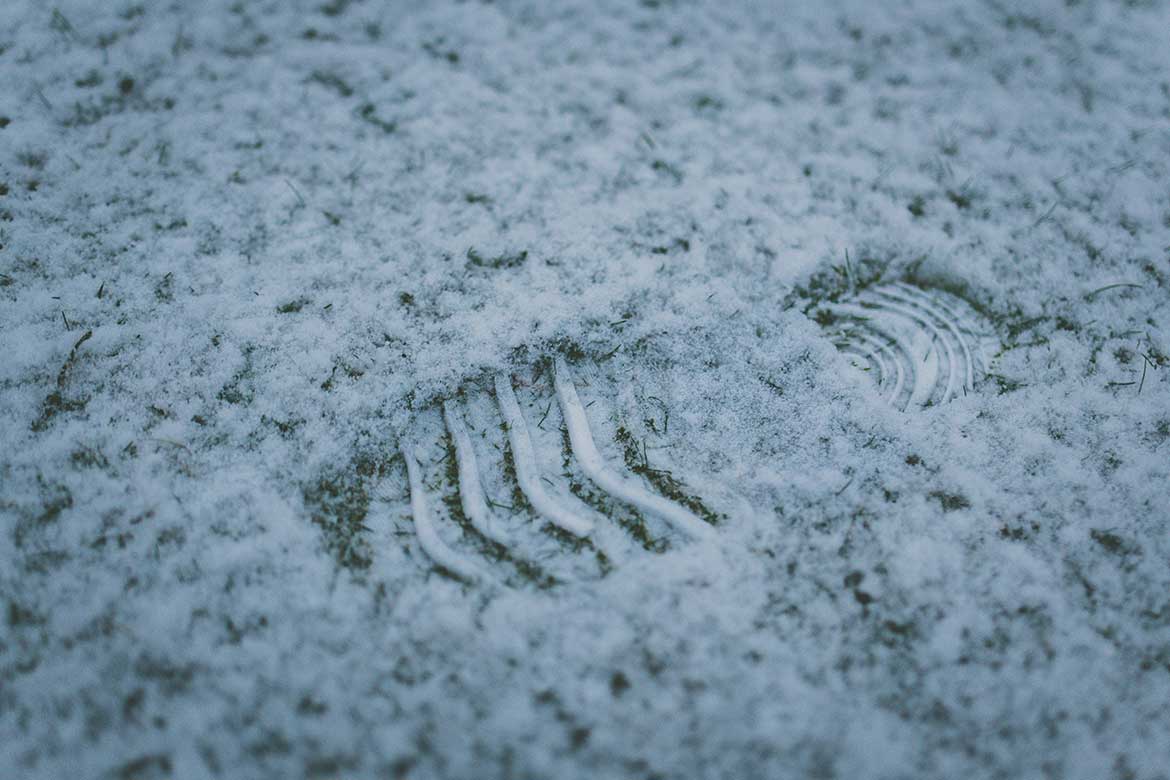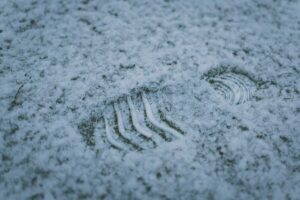
SPG SAFETY TOPIC – Understanding Hypethermia
Hypothermia occurs when body heat is lost faster than it can be replaced and the normal body temperature (98.6°F) drops to less than 95°F. Hypothermia is most likely at very cold temperatures, but it can occur even at cool temperatures (above 40°F), if a person becomes chilled from rain, sweat, or submersion in cold water.
What are the symptoms of hypothermia?
- Mild symptoms:
- An exposed worker is alert.
- He or she may begin to shiver and stomp the feet in order to generate heat.
- Moderate to Severe symptoms:
- As the body temperature continues to fall, symptoms will worsen and shivering will stop.
- The worker may lose coordination and fumble with items in the hand, become confused and disoriented
- He or she may be unable to walk or stand, pupils become dilated, pulse and breathing become slowed, and loss of consciousness can occur. A person could die if help is not received immediately.
What can be done for a person suffering from hypothermia?
- Call 911 immediately in an emergency; otherwise seek medical assistance as soon as possible.
- Move the person to a warm, dry area.
- Remove wet clothes and replace with dry clothes, cover the body (including the head and neck) with layers of blankets; and with a vapor barrier (e.g. tarp, garbage bag). Do not cover the face.
- If medical help is more than 30 minutes away:
- Give warm sweetened drinks if alert (no alcohol), to help increase the body temperature. Never try to give a drink to an unconscious person.
- Place warm bottles or hot packs in armpits, sides of chest, and groin. Call 911 for additional rewarming instructions.
- If a person is not breathing or has no pulse:
- Call 911 for emergency medical assistance immediately.
- Treat the worker as per instructions for hypothermia, but be very careful and do not try to give an unconscious person fluids.
- Check him/her for signs of breathing and for a pulse. Check for 60 seconds.
- If after 60 seconds the affected worker is not breathing and does not have a pulse, trained workers may start rescue breaths for 3 minutes.
- Recheck for breathing and pulse, check for 60 seconds.
- If the worker is still not breathing and has no pulse, continue rescue breathing.
- Only start chest compressions per the direction of the 911 operator or emergency medical services*
- Reassess patient’s physical status periodically.
*Chest compression are recommended only if the patient will not receive medical care within 3 hours.
https://www.osha.gov/SLTC/emergencypreparedness/guides/cold.html
SPG has put into place a SOP in order to Combat “working in extreme cold” weather :
SOP 39- Working in Extreme Cold
Purpose
This practice applies to situations where employees may be exposed to cold temperatures during their work activities. Exposure to cold occurs as a result of outdoor seasonal work or indoors in refrigerated or cold storage areas.
Scope
This procedure applies to all employees and subcontractors of SPG Construction, LLC “SPG” and applies to projects where employees may be exposed to extreme cold working conditions.
Responsibility
Employees – Employees must read, understand and follow:
- The applicable project policies and procedures pertaining to their assigned duties;
- Manufacturer’s specifications and recommendations;
- Company and site specific requirements; and
- Applicable legislation and regulatory requirements.
Foreman and Frontline Supervision – Foreman and front line supervision must verify:
- That the applicable policies and procedures are readily available to the employees;
- Employees have read, understood, and are following:
- The applicable policies and procedures;
- Manufacturer’s specifications and recommendations;
- Company and site specific requirements;
- Applicable legislation has been made available to the worker;
- All cold weather supplies are regularly inspected and restocked;
- Only competent workers are assigned duties that require little or no supervision;
- Level of competency through ongoing monitoring, mentoring and/or periodic evaluation.
Project Management – Project management will monitor operations for compliance with:
- Applicable project policies and procedures;
- Manufacturer’s specifications and recommendations;
- Company and site specific requirements; and
- Applicable legislation and regulatory requirements.
Project Health, Safety and Environment (HSE) Staff (Site) – The site HSE representative will monitor worker activities and conduct periodic reviews of the policies and procedures to verify ongoing compliance with:
- Applicable project policies and procedures;
- Manufacturer’s specifications and recommendations;
- Company and site specific requirements; and
- Applicable legislation and regulatory requirements.
Procedure
Hazards – Hazards may include but are not limited to:
- Frostbite – the freezing of skin tissue;
- Hypothermia – the body core temperature drops below 95 degrees F; and
- Reduced coordination and reduced decision making ability.
Engineering Controls – Engineering controls will include but are not limited to:
- Whenever practical and reasonable, hoarding and temporary heat is installed around the work area; and
- Ensure that walkways, stairs, scaffolds, or other travel ways are salted, sanded, or cleared of ice/snow as soon as practical and work does not proceed until these areas are safe.
Administrative Controls – Administrative controls will include but are not limited to:
- Task Safety Analysis (TSA);
- Workers and supervisors must consider the hazards of working under cold conditions as part of their hazard assessments:
- Air temperature;
- Wind speed;
- Moisture (sweat or working near water);
- Duration of exposure to cold;
- Type of clothing worn;
- Work/rest schedule;
- Type of work performed;
- Some medications;
- Previous exposure to cold (acclimatization);
- Age of the worker; and
- Physical condition of the worker.
- Verify that appropriate clothing is worn for the cold, wet and windy working conditions:
- Too much clothing leads to sweating and greater heat loss;
- Too little clothing permits outright body heat loss;
- Be aware that mobility, dexterity and visibility may be affected by additional clothing;
- Layered clothing should be worn so that the worker can adjust to the temperature conditions and work activities:
- Layer clothing helps manage moisture and keep the worker dry;
- Insulating layers must trap air to stay warm and protect from wind and weather; and
- If fire retardant outerwear is required, the under layers must be of a non-melting material.
- Footwear, gloves, mittens and face protection must be properly selected to protect the worker from the cold and yet not make it difficult or impossible to perform the work;
- Food and liquid should be considered in colder environments, as exposure to cold increases energy requirements:
- Consume warm fluids to provide energy and warmth;
- Workers should add high energy wholesome foods to their diet;
- Workers who work for extended periods in cold conditions should have ready access to heated shelters;
- When entering a heated shelter outer and middle layers (as required) of clothing should be removed to prevent overheating and sweating;
- In extremely cold conditions workers should employee a buddy system and frequently check each other:
- If signs of frost bite or hypothermia occur the worker can be assisted.
- Minimize periods of sitting and standing;
- Employees will be informed of the dangers associated with working around unstable ice and snow accumulations;
- Use of trained, qualified, competent workers; and
- Ensure that designated employees are trained in administering first aid treatment for cold induced injuries or illnesses are present during each shift.
- Personal Protective Equipment (PPE) – PPE Controls will include but are not limited to:
- Head – ANSI approved hard hat with insulated liner;
- Eye – ANSI approved safety glasses;
- Foot – Construction grade, all leather, over the ankle, safety toe boots with insulation and layered socks;
- Hand – Gloves (appropriate for the task) with liner and/or insulated. Consult with the HSE professional(s) and/or utilize the SPG Hand Protection Matrix for assistance;
- Body/Limb – Long sleeves and long pants or coveralls with layered underclothing and insulated outerwear; and
- Additional PPE may be required, based on:
- Work environment;
- Government regulations/legislation; and/or
- Client/project policies and procedures.
Training
- Training will be conducted for all employees who will be subjected to extreme cold weather environments prior to assignment and annually thereafter;
- The training will include, but not be limited to:
- Signs and symptoms of cold weather health problems:
- Hypothermia;
- Frost Bite; and
- Trench foot.
- First aid training for cold weather related health problems or injuries;
- Hazards associated with icicles;
- Hazards associated with snow build-up; and
- Hazards associated with ice build-up.
- Signs and symptoms of cold weather health problems:



0 comments